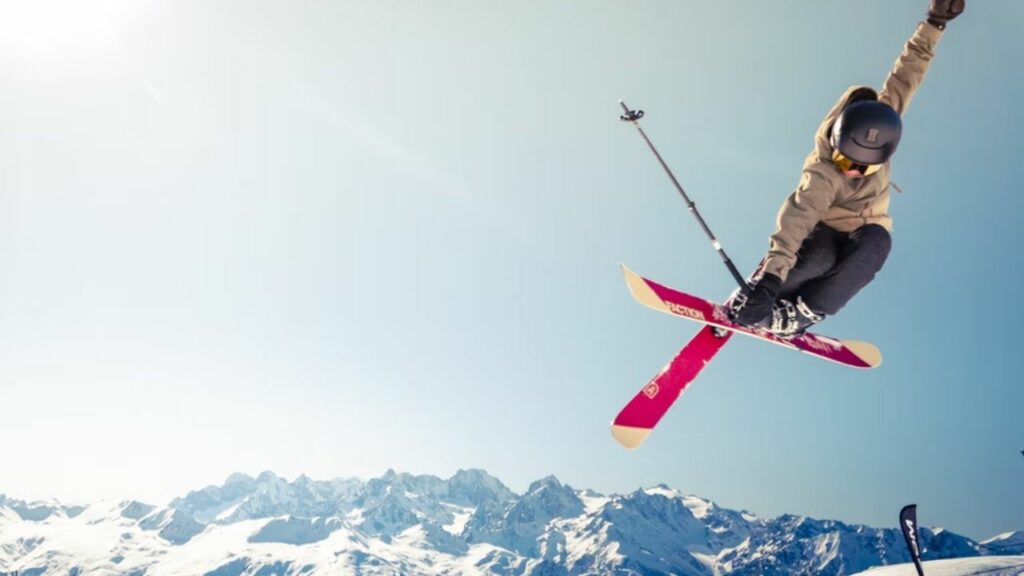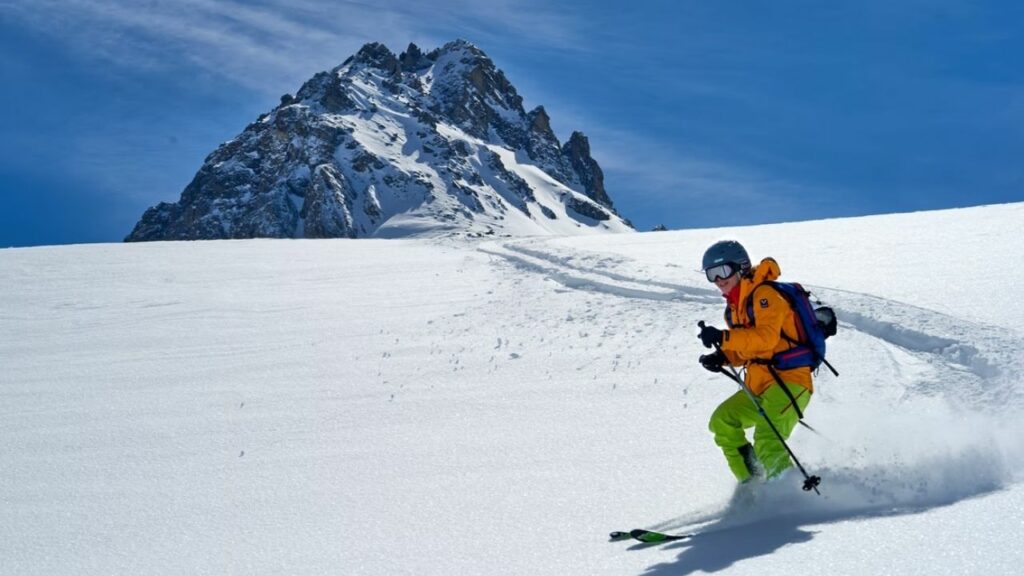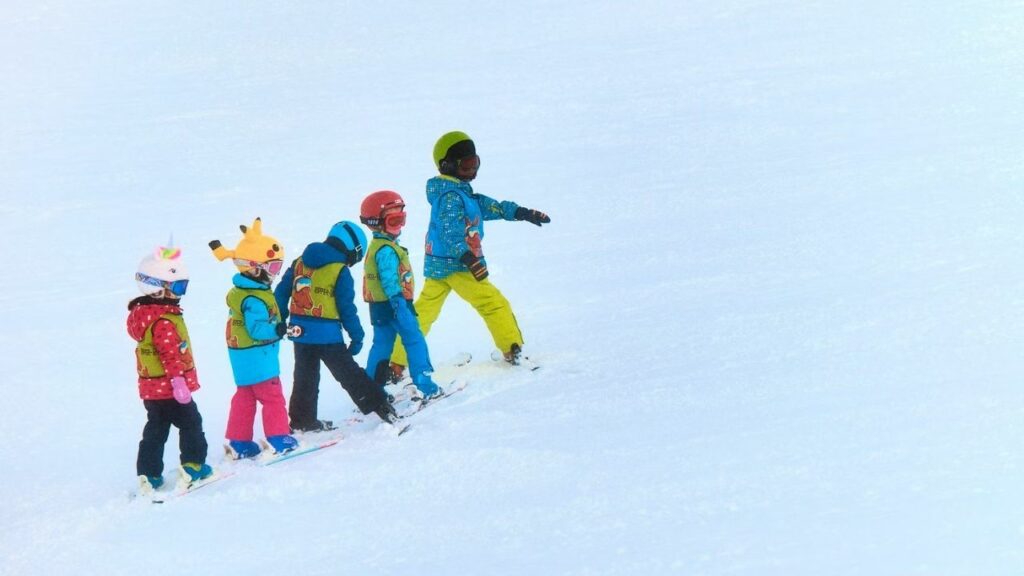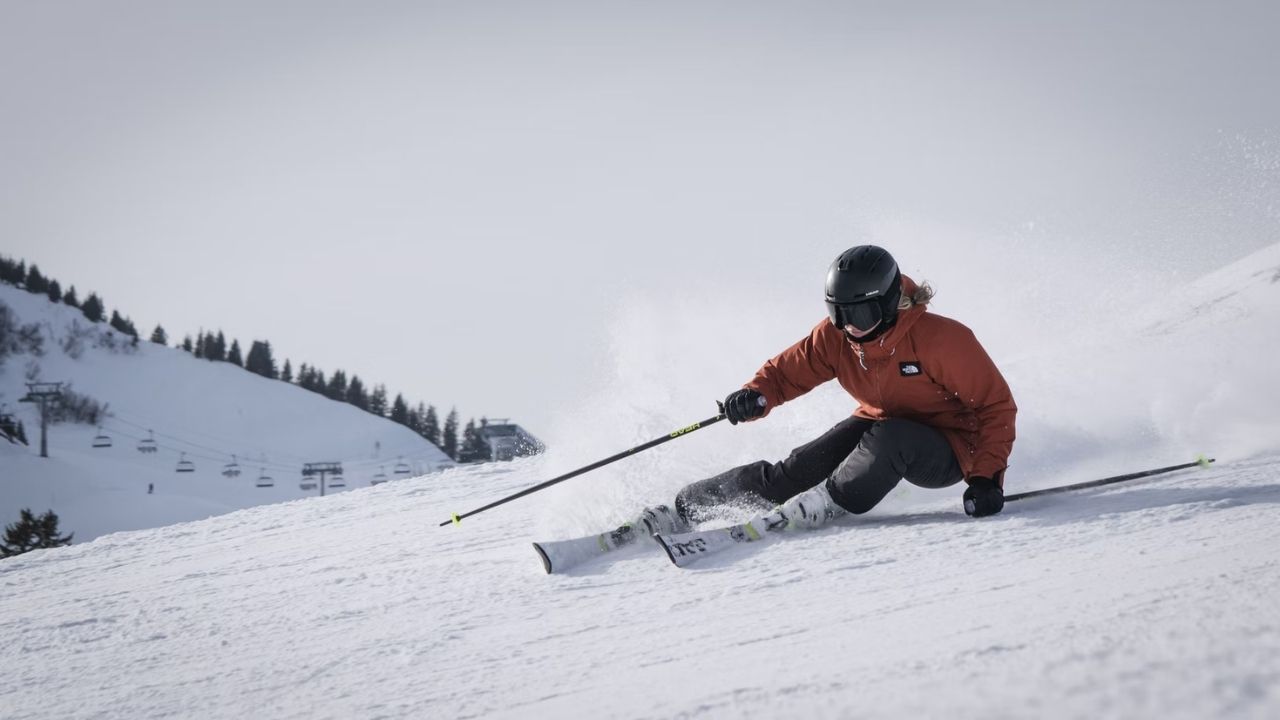Skiing is an expensive hobby. Most people’s dilemma is whether to buy their ski equipment or just rent gear at the resort. Truth is, there’s a good case to be made for both sides of the buying vs. renting debate.
Buying your own skiing gear gives you access to unused and reasonably maintained (if not new) products. It’ll also be a comfortable fit rather than the “standard size.” In comparison, renting your skiing gear saves a lot of money if you’re not a frequent skier.
So, how do you make the right choice? Let’s find out.
How much does it cost to rent or buy ski equipment?
Renting ski equipment costs about $25-$45 per day and $200-$500 per week across the United States. The rate could be higher or lower but this is the average. In comparison, the purchasing option costs $600+ for ski equipment and $400-800+ for clothing.
Though that’s just the modest option. These days more and more skiers are leaning towards premium Gore-Tex products for their quality, safety, and loads of other features. But it aint cheap. Expect to pay upwards of $1300-$1500 for top-end Gore-Tex gear.
When does it make sense to buy ski equipment?
You should only buy your ski equipment after you’re absolutely sure you’ll be skiing frequently going forward. Buying (or investing in) skiing equipment only makes sense if you’re skiing for multiple days every season.
Here are some benefits of owning your ski equipment and clothing:
1. It’s cheaper in the longer run.
Owning your ski equipment is undeniably cheaper if you’re a frequent skier.
Yes, there’s that added cost of transport and maintenance, but it’s not as widely expensive as you may think. Ballpark $100 per year, even if you ski every season.
Say you got your equipment for $800. That would still be cheaper than 2-3 one-week-long ski trips.
2. Owning your gear saves time.
Having your ski gear on hand is just as time-saving as booking the ski lift in advance – you get to cut the line. You don’t have as much time left if you subtract the time it takes to stand in line to rent ski equipment every day and then return it.

3. You get to choose your equipment.
Purchasing ski equipment gives you the option to get the tools specific to your ski style. And you can choose between various models to select one with your preferred features.
Renting equipment doesn’t give you that kind of freedom in choosing equipment. You just get what’s available.
4. You’re familiar with your equipment.
Speaking of preferred equipment, you also have the added benefit of practicing with your gear. You can get to know the best way to handle your skis and equipment and then develop your ski style accordingly.
When renting, you get different equipment each time. And you have to spend a lot of time getting accustomed to that equipment every time you go.
Simply put, the learning curve as a beginner with self-owned gear is considerably better.
5. Your gear will perform better.
If you’ve ever rented ski equipment (or any other equipment), you may have noticed some wear and tear. In comparison, self-owned gear will always perform better, provided it’s well-maintained.
When should you rent ski equipment?
Beginners should always rent their equipment. You shouldn’t buy your own stuff after skiing only one or two times. Regardless of how much fun skiing is, it’s not a sport for everyone. Even if you’re not a beginner but hardly go skiing (every few years or so), you still shouldn’t automatically buy ski equipment and outfits. It really depends on the frequency.
Here are some benefits of renting your ski equipment and clothing:
1. It’s perfect for beginners.
Hiring ski equipment saves money and avoids committing to an activity you might not do often.
2. Choosing your equipment for the environment.
Similar to how buying allows you to match your equipment to your style preferences, renting gives you access to equipment that fits the environment. Rental shops have skis with features tailored for that specific mountain and the type of snow.
3. Renting your gear saves hassle.
Transporting and carrying your own equipment costs time and money. The hassle might not be worthwhile for everyone. In comparison, you don’t have to worry about carrying if you rent on-site and load-off on the mountain.

4. You get to use the latest ski models.
Once you buy, you’ll be stuck with the same model for some years. But with the rental, you get to use comparatively newer models with the latest features.
5. You don’t have to worry.
Yes, the equipment will come with some wear and tear, but you get to use it 100%. Maintenance is not your problem.
6. Discounted or package pricing options.
Many resorts have clubbed pricing or discounted packages for renting equipment and clothing along with lodging.
When to make the hybrid choice: buy some, rent others?
There’s no absolute choice for buying or renting ski equipment. As I said, both sides make a compelling argument. The best option is to take the hybrid route – buy some of the gear and rent others. Of course, this option isn’t for beginners or infrequent skiers.
- Ski Clothing: It’s ideal to get your own ski clothing tailored to your size. You can use the same outfit for snowboarding or just about any other snow-related activity. Having your clothing will keep you comfortable all day long.
- Ski Boots: You should buy ski boots for yourself, there’s no other option. The reasoning is similar to clothing; you’re going to be standing and skiing all day, you ought to be comfortable enjoying the experience.
- Ski & Poles: You can get by not owning your ski and poles for a really long time. It also makes sense to rent them to use the latest models every time you ski.
Are used skis worth it?
Used skis are worth the cost and effort if they’re in good condition and performance since they’ll be considerably cheaper. It’s also a good idea for beginners provided that the skis are well-maintained from reputable companies to last longer than a decade, if not more.
Consider five major factors when buying used skis:
- The date of the last tune-up. If it was recent, you’re good to go. Some resale shops have a policy of tuning up the skis at the time of purchase.
- Check the base for scratches and gouges. If they’re short and shallow, the skis are okay to purchase because you can easily fix them. Don’t get them if they’re long or deep, or anywhere near the edge.
- Similar to base, check for any scratches and gouges on the top of skis. Buy them only if they’re short and shallow.
- Check the ski edges for any signs of wear and rust. Also, check the depth of edge (metal strips left). They’re shaved off each tune-up during grinding to maintain the sharpness. A thinner edge means a shorter remaining lifespan, so get one with a thicker edge.
- If the old skis have bindings attached, check them for maintenance needs. Also, check the model for the latest safety measures. Older models may not have all the latest safeguards. If the bindings aren’t at the top or middle of the safety list distributed by manufacturers, consider buying without the bindings.
How has COVID affected renting equipment?
Let’s address the elephant in the room – is renting equipment safe anymore?
It depends. Ideally, you shouldn’t have any problem renting equipment as long as you and the shop owners take appropriate measures without cutting corners.
Additionally, you’ll need to rent / buy face coverings or masks for everyone above three years. Local guidelines and site policies vary on face coverings when outdoors.

Multiple restrictions have been established in response to the ongoing pandemic. Nonetheless, the mountain rental shops are open for business, some with different rules and regulations on renting ski equipment. To be safe, book your rental equipment well in advance.
You should also book ski lessons for beginners in advance for the same reason. Yes, you can just rent equipment / book lessons offline/onsite because the shops are open, but here’s why you shouldn’t…
First off, many rental shops limit the number of people inside the shop at the same time. Secondly, since more people are “reserving” their equipment online, there may be less equipment leftover for offline rentals.
Well, that’s everything to know about buying vs. renting skiis. Check out my other guide on buying vs. renting snowboarding gear if your group is considering both options. I focus on different points there, all of which can help you make a collective decision.
Cheers to your next skiing adventure!

